Defining groupcore
Exploring the new ways people work together in theory and practice
In a recent post I wrote that Metalabel’s focus is groupcore: software, tools, economics, spaces, and ideas that help creative people cooperate. But what does groupcore mean? Can one groupcore as a verb? Is groupcore distinct from other forms of coordination we already know?
Groupcore is a term I use for the loose, rotating circles of collaboration and work that the internet makes possible. To groupcore means being part of multiple collaborative spaces (IRL and online) where you make things with other people — some that pay money, some that don’t — that together form the basis for doing things with others, financially supporting yourself, and manifesting parts of who you are.
Groupcore happens when people seek cooperation that preserves autonomy, distributes authorship, and generates outcomes none could make alone. It’s an underlying mode, like open source or co-ops, that anyone can participate in.
Practically, groupcore looks like a post-industrial guild, a scene, a metalabel, or a people-controlled DAO: a horizontal network overlapping in skill, interest, location, or history, where efforts may alternately compete, conflict, or collaborate.
The physics of the groupcore approach produce two other common traits:
Groupcore is fractal. Each level and phase of a groupcore effort is a reflection of its larger self. The roles within a groupcore project reflect the group’s norms and vibes (positive and negative). Subgroups inherit the meta-logic of the overall work. The creative process reproduces similar patterns at different scales. It’s groupcore all the way down.
Groupcore is anti-fragile. Groupcore practices do not rely on a single product or source of income. This diversified structure makes them inherently anti-fragile. It encourages a high turnover of small ideas with distributed authorship and low fixed costs. The failure of one project is unlikely to threaten the network. This resilience compounds, as groupcore work tends to strengthen as it survives conflict and meaningful toil, producing emergent slack and opportunities to integrate learnings as it evolves.
What groupcore is not
Groupcore is not the same as organizational and work-driven structures we’re used to.
Poly not mono. Traditional orgs have fixed borders that establish authority and direction. Groupcore orgs are nodes that simultaneously participate in many different projects and configurations, both intra-group and inter-group. Cross-pollination of ideas and techniques between groups is a core feature.
Lattices not skyscrapers. Groupcore projects are interlinked and networked more than hierarchical. Their growth is not meant to produce towering edifices so much as durable and broadly integrated structures. Groupcore influence is more lateral than vertical and reflective of the post-web world.
Fluid not fixed. Groupcore projects focus on a specific vibe or outcome while maintaining a sustained fluidity in how they get there. Plans to make a project can easily evolve into work on the underlying infrastructure, side components, or last-mile applications. Unlike a job, groupcore is not something or someone you “work for” but a conscious path of open-ended labor.
How to groupcore (basics + stack)
For any groupcore practice to become realized, a few key elements are needed:
Purpose. To properly groupcore, there must be a shared interest or goal. What does this group exist to do? Is it a feeling? An outcome? An escape?
People. Who do you make things with? What do you all do? What skills does each person bring to the group?
Responsibilities. What does it mean to be part of your group? How can people contribute? What are they here to do?
Outcomes. What’s meant to happen as a result of coming together? Are the goals financial, impact, or something else?
If you have these, you have the start of a groupcore practice. To activate these basics, a few shared tools are needed:
Shared intentions and language. Agreement and language are key tools for any groupcore endeavor. The group needs a shared way of communicating (which will differentiate from outside vocabulary over time) and some shared ideal that lets them act without being bribed, coerced, or managed into it.
Shared communication spaces. Most activity happens in shared communication environments, usually a group chat, with occasional voice or video calls and IRL gatherings. This space produces the raw material of ideas and seeds of future actions.
Shared brain. The shared communication channels generate collective knowledge and understanding, recorded and inscribed in the group’s shared brain — perhaps a mutually accessible folder, single master document, or something more or less formal.
Shared resources. The group must be supported by a set of shared resources, like audience, money, reputation, ability to infiltrate or influence desired parties, and so on.
Groupcore decision making
With these shared social and technical tools, a groupcore project will begin to operate according to its nature. These ideals tend to be defined in theory and realized in practice across a few key axes:
Decisions. Does everyone get a chance to weigh in or only specific people?
Proposals. Do you need to propose or can you just do things?
Consent and dissent. Is everyone expected to agree with everything that goes on? What happens if they don’t?
Norms. Is the internal structure and process of the group fixed and defined by rules, or is it fluid and something that changes based on new experiences?
Groupcore can take many forms, from intentional democracies and co-ops to anarchic free-for-alls and Dark Forest conspiracies. Each has a light side (mutual support, shared power, collective action) and a shadow side (bureaucracy, ego-trips, cult dynamics). The same tools that make a group resilient can also make it insular or coercive. The difference is in how power, attention, and care are handled.
How Metalabel groupcores
For the past four years, Metalabel has been an exploration and manifestation of groupcore ideals. We initially called these structures “culture labels” and “metalabels” – psychic infrastructure that allows groups of people to cooperate in creative fields.
From the beginning we adopted the working structure of a heterarchy — a fluid hierarchy where a different person is empowered to make a final decision based on the area of expertise. Each person has a domain in which they’re expected to act and make calls as they see fit, and as it coheres to the larger vision of that project.
A heterarchy is a high-trust structure that relies on rapid decision-making, low egos, and comfort with a fluid approach. There are times in our history we’ve been more hierarchical, which tended to coincide with times of struggle (competing ideas, unsuitable processes for who we are, things not working well). Our best moments have come when we’ve honored this way of working.
Metalabel the lattice
Groupcore is not a skyscraper but a lattice. Metalabel’s projects show one way this can look.
In this diagram, the center node is Metalabel Studio – the core group and heterarchy where decisions are made, ideas are shaped, and responsibility is ultimately held.
At the bottom, two nodes anchor the structure:
People. The four of us at the core plus our wider network of contributors, allies, and our past collaborators.
Responsibilities. The shared work each of us holds in our domains.
When this base combines with our purpose and outcomes, it results in the releases that express our work.
One of the most significant is the Metalabel marketplace — infrastructure and space for cooperative releases. This is where most people first encounter us. We spent two years building its architecture, product, and community. Today the work is managed by a smaller subsection of our team focused on curation and customer support. 30,000+ collectors, 1,000+ creators, and nearly $2 million in transactions have moved through this over the past three years.
One group releasing on Metalabel is the Dark Forest Collective, a writer group that uses our tools to release books and experiment with shared finances and treasuries. We started and continue to organize this project, which has put out three books so far.
Our experiences with the Dark Forest Collective led to Artist Corporations. This is a proposed legal structure for artists and creative people that reflects groupcore values. This started as a single, one-off release, but the project is growing into a separate institution and team from Metalabel, with two of us steering it as it begins its mission.
Our other focus, the Dark Forest OS, is a software project that encodes groupcore patterns into a product that anyone in this lattice will be able to use. From built-in metablogs to shared resources and communication channels, DFOS will offer the core groupcore stack in one tool.
How we manage these projects
This is a lot, especially for a team of four. So how do we manage this?
Limit decisions. Make as few decisions as possible. Strive to operate in a flow state where one project leads to the next. Make work more stream-of-consciousness than premeditated. If we’re forced to choose between paths A or B, it means something upstream has gone wrong.
Strong norms. Over time we’ve developed a set of norms that have served us well, like release culture, metablogs, and egalitarian pay and equity. These help limit process and reinforce who we are.
Hands-on in every role. We all perform different specific jobs. There are no managerial or purely administrative roles. We use our time to focus on the direct output of the experiences we create and less time on the meta-management of it.
Sequential is better than simultaneous. A benefit of a release-based structure: you go all in on a project for a set amount of time before shifting onto the new one. Even as we’re managing multiple simultaneous projects now, they began at different times, require different people, and do not compete with each other for resources. Poly not mono.
We make what we want. We project our own groupcore patterns into products and tools for others to follow or fork. We make something because we’re interested in it for ourselves, then productize and extend it to others. An organic, fractal process.
Everything points in the same direction. When we look at our portfolio of projects, we see the same ideas repeatedly expressed in different ways. Everything we do points to the same goals, even as the how keeps changing.
You’ll see our groupcore vision manifested into a tool others can use when DFOS opens up in the not-distant future.
A groupcore future
I’ve long been inspired by the idea of the Hacienda from an early Situationist manifesto. The Hacienda is the place where all the right people are having all the right conversations and life feels truly alive. But it’s a place that does not exist and cannot exist in any permanent way. It’s a place that must be built, and that anyone can build at any given moment.
This is what groupcore is like. Less an end-state than a state of being. Groupcore does not seek to dominate competition or extract excess labor. The goal of groupcore is to open the space of divine connection that exists between us, and to keep it open long enough for new ways, new selves, and new value to grow.

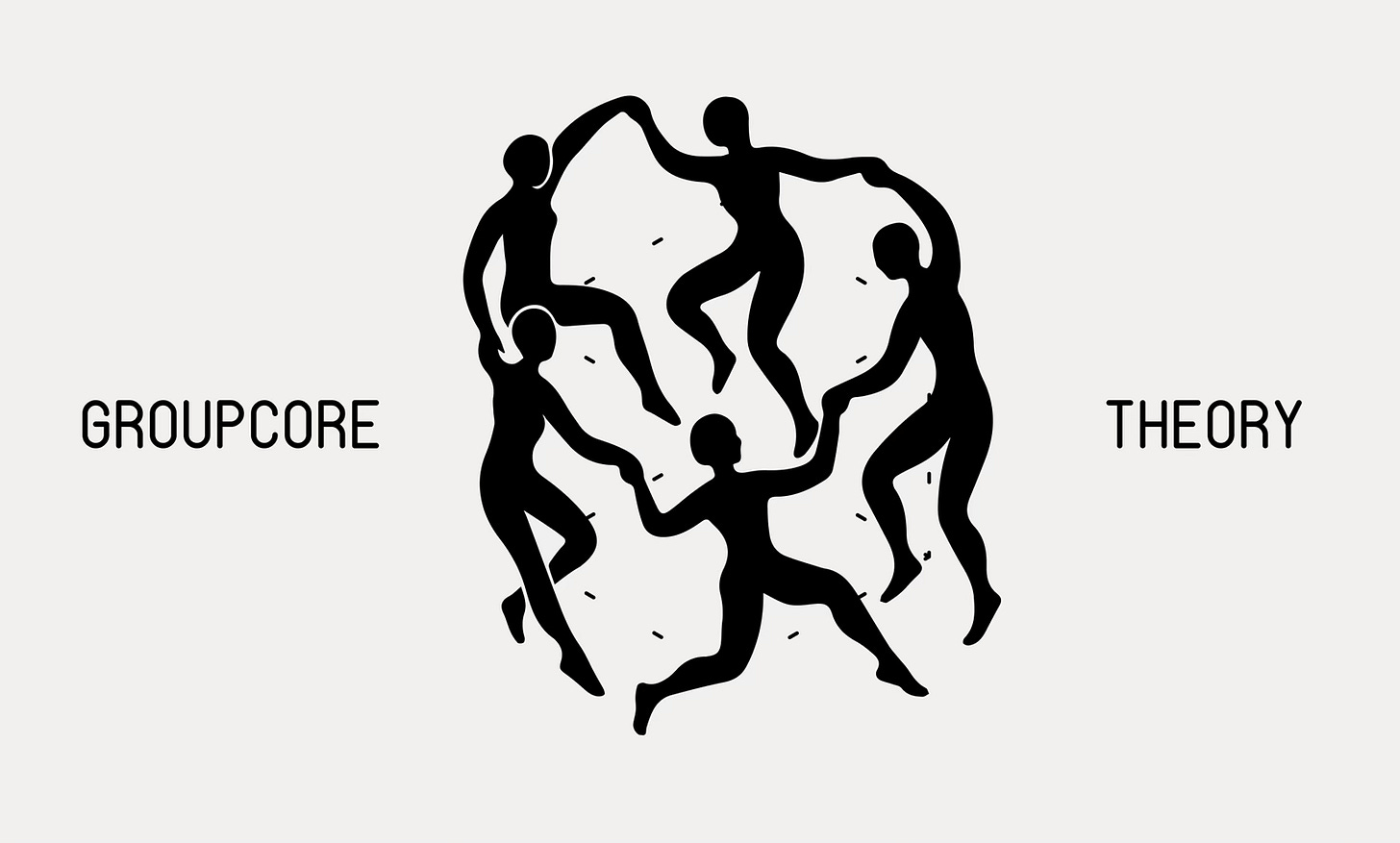

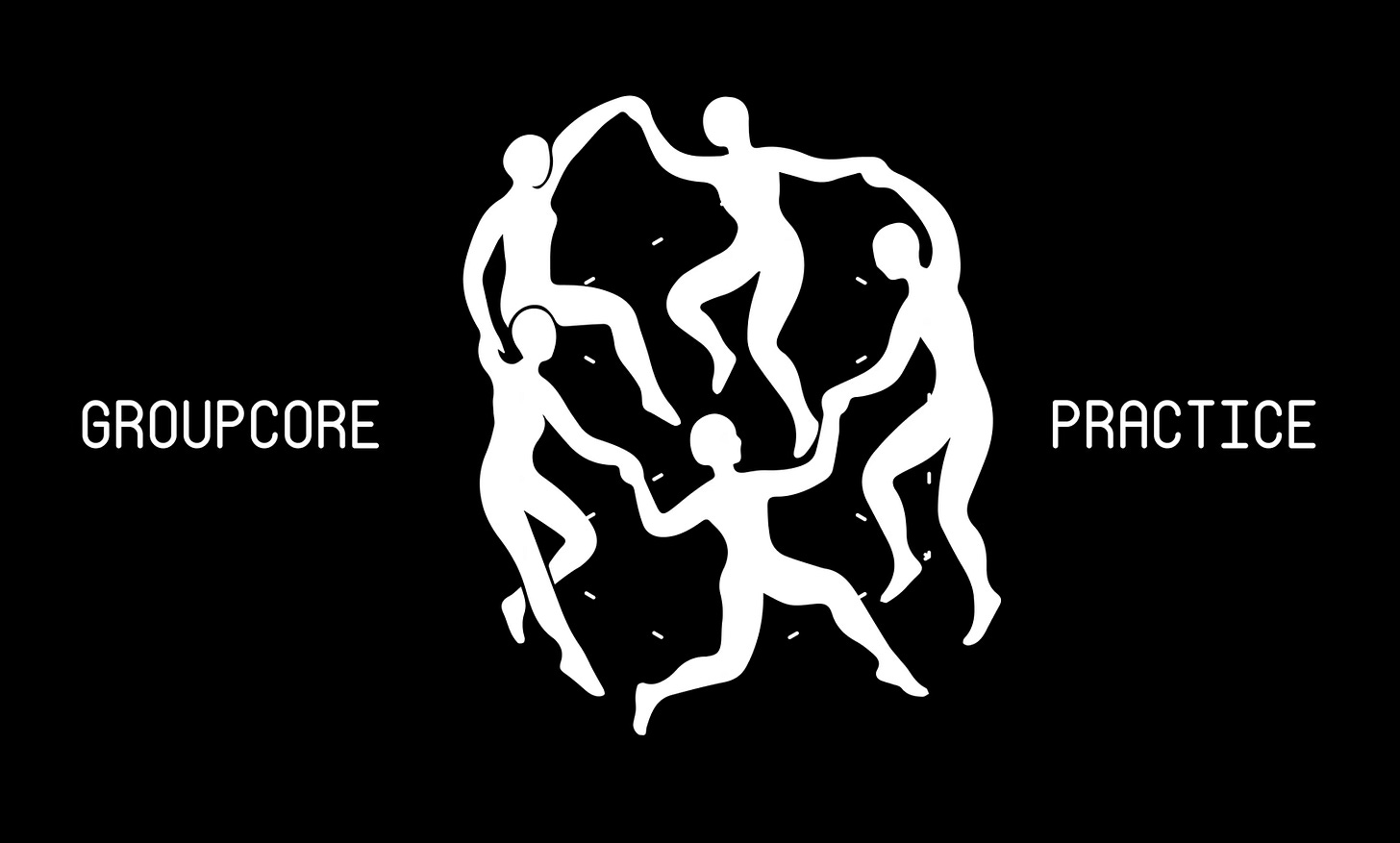
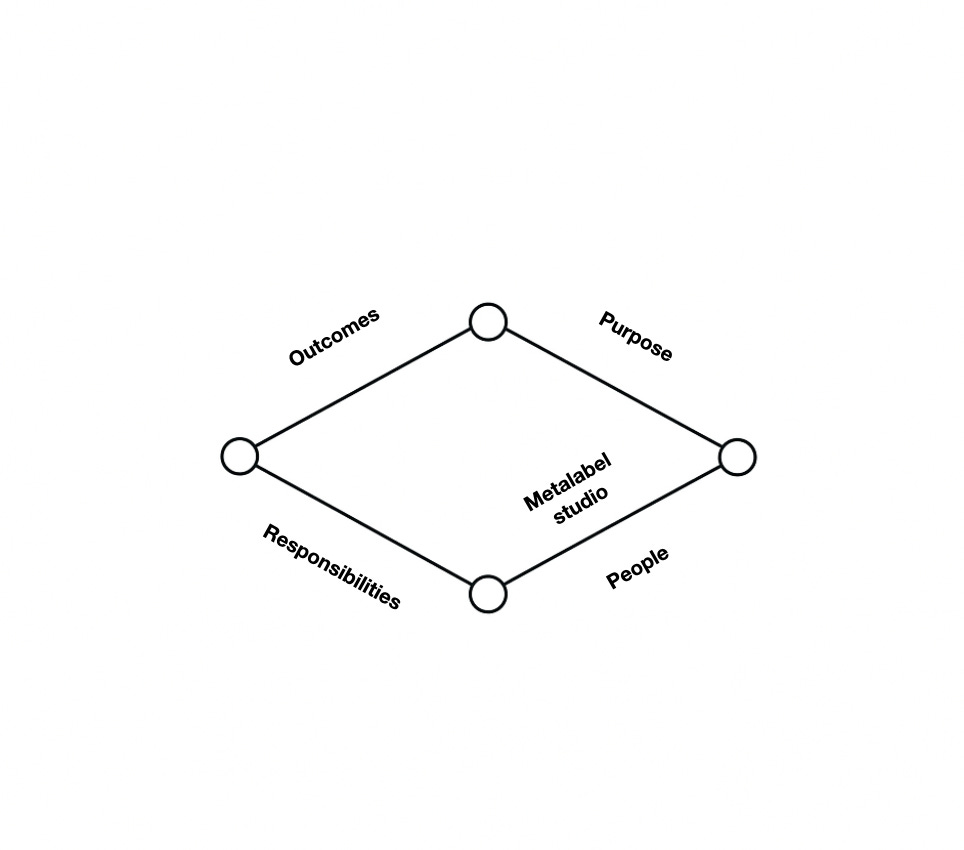
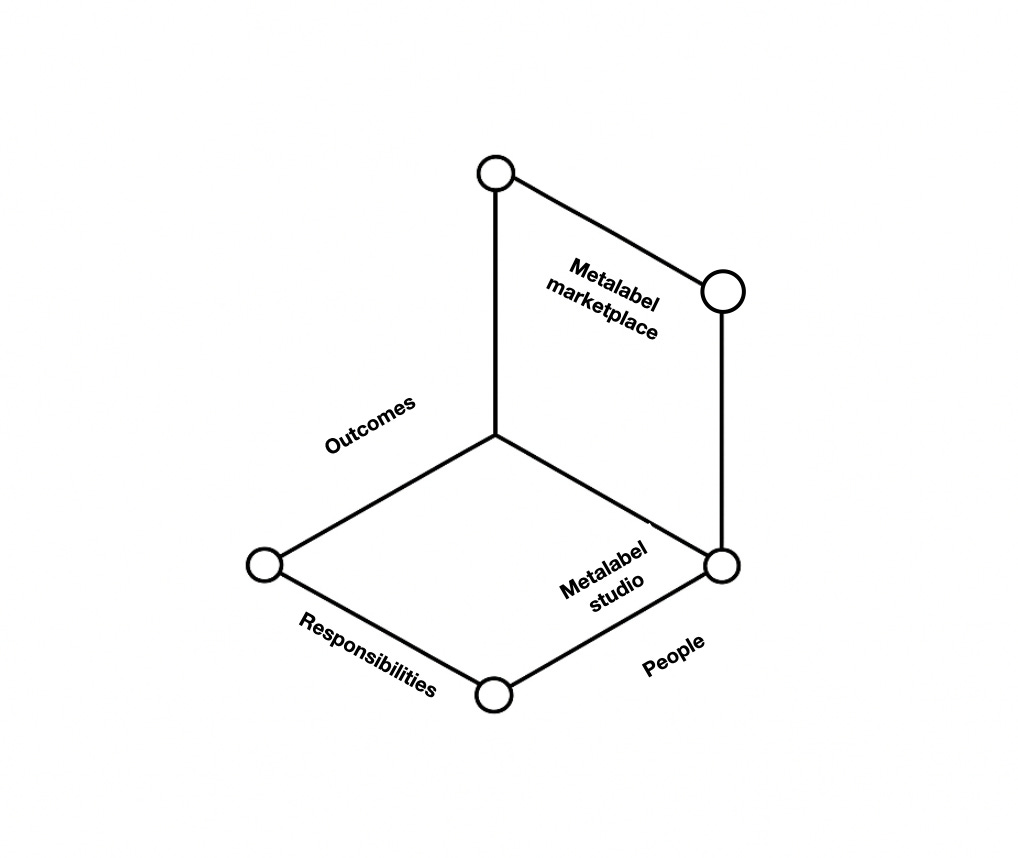
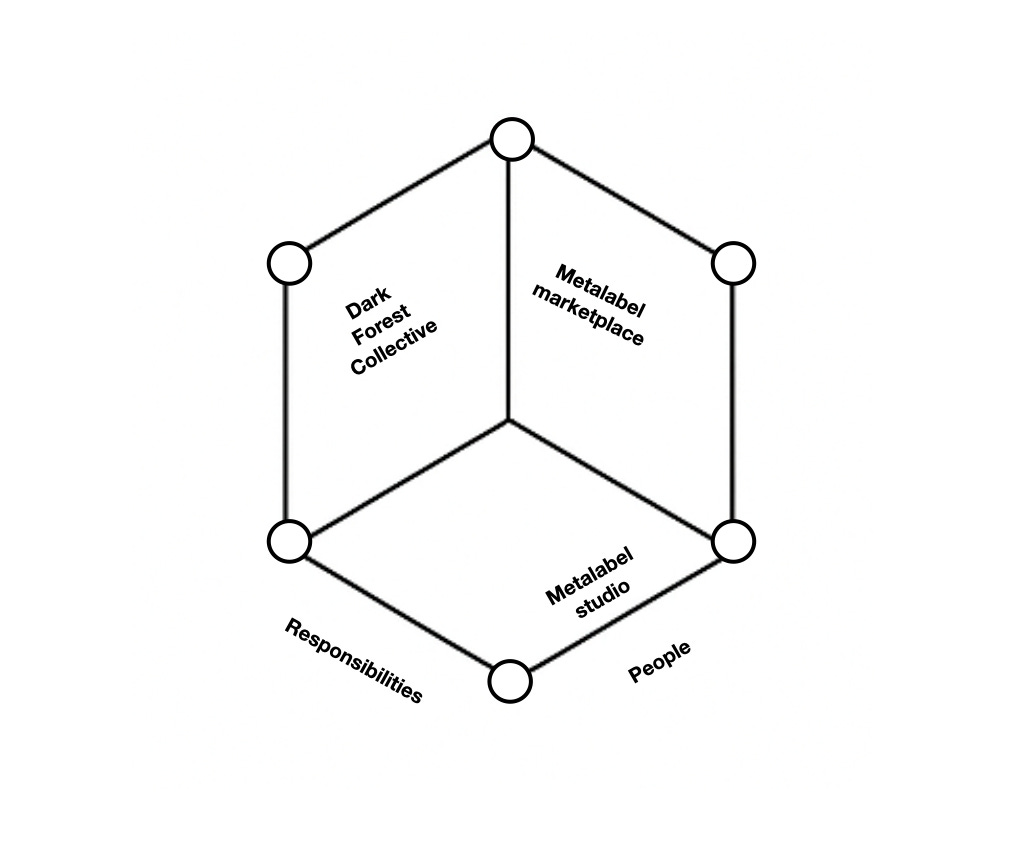
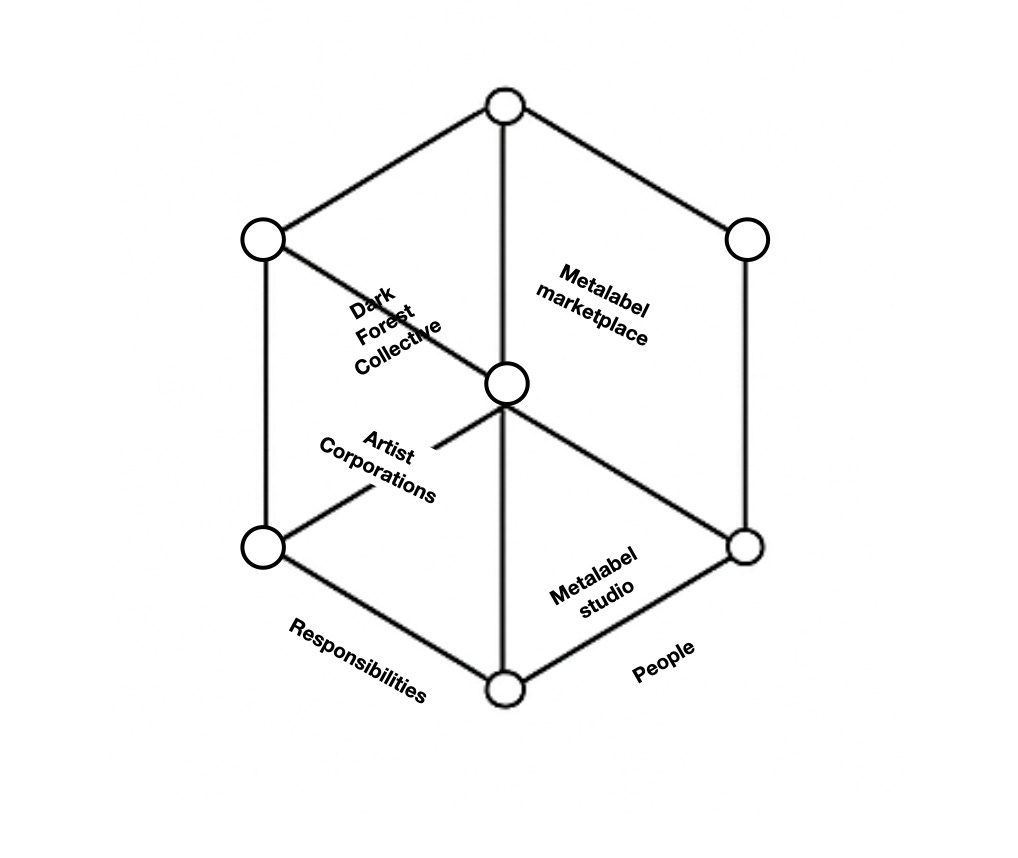



Yancey,
I think it would be wise to run an actual project through your groupcore structure so that a practical example may be seen (The way producing a widget is used as a model in the old-fashioned business space) This would illustrate the "practice" part of your exploration.
Also, I believe that there must be an educational focus to creative work as we go forward and you need to consider that as a part of your matrix. If you want to see what I mean you might take a look at the recent post I wrote about the existential limits of a capitalist model of creative work(attached link below) As you will see, It is my belief that the over-arching goal for creative success (including Groupcore's) shouldn't hew too closely to the current zero-sum capitalist system and that education is paramount in our new age of Generative Artificial Intelligence.
https://open.substack.com/pub/fhope/p/a-race-to-the-top?r=3jv4fv&utm_campaign=post&utm_medium=web&showWelcomeOnShare=false
I am reading the book by the Dark Forest writers and I find it to be purely descriptive and uninspiring. I get that this is a manifesto, but the writing leaves us cold. I wonder if it is because of translation? You need more artist-writers and poets. This reminds me of the work of Cory Doctorow without the fantasy